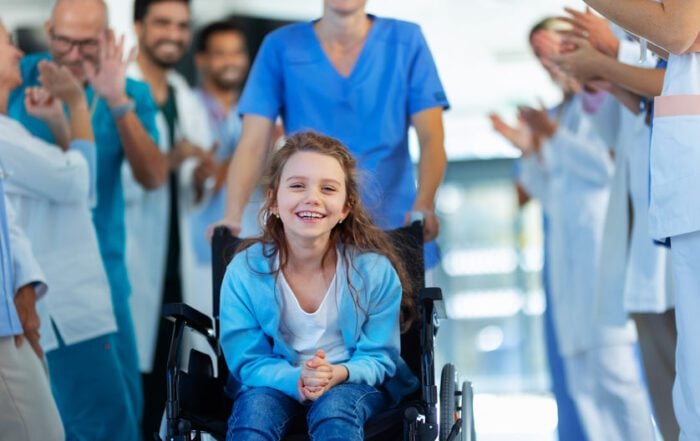Get Hip To Labral Tears
While many people know about ACL (anterior cruciate ligament) and hamstring tears, hip labral tears are a less recognized but equally debilitating injury. A hip labral tear is a condition in which the ring of cartilage that lines the socket of the hip joint becomes damaged or torn. This injury can cause pain and discomfort in the hip. Over time, labral tears decrease mobility and stability. Hip labral tears are often misdiagnosed or overlooked initially, as the symptoms can be similar to other hip-related conditions, like arthritis. Hence, seeking out an orthopedic surgeon is crucial for accurate diagnosis and appropriate treatment options, such as labral repair.

Causes and risk factors
Hip labral tears can be caused by various factors and can occur in individuals of any age. However, young athletes involved in high-impact activities or sports like soccer, football, ice hockey, and ballet are particularly at risk. Other risk factors include hip dysplasia, which is an underdeveloped joint from birth. Structural abnormalities of the hip joint, repetitive activities that stress the hip joint, and trauma to the hip, such as a fall or car accident, are other possible risks. In addition, hip labral tears can also be associated with pre-existing hip conditions, such as femoroacetabular impingement.
Conservative treatments for hip pain
Before considering surgical options like labral repair, doctors will first recommend conservative treatments for hip pain. This can include rest, physical therapy (PT), pain medication, and activity modification. However, these treatments may only provide temporary relief and may not address the underlying issue of a labral tear. When symptoms persist or worsen, seeking the expertise of an orthopedic surgeon becomes necessary to determine if labral repair is needed.
Time for repair?
Labral repair is a surgical procedure that aims to repair the damaged or torn labrum. During the procedure, the orthopedic surgeon will make small incisions around the hip joint and insert arthroscopic instruments to visualize and repair the labrum. Labral repair can involve various techniques. A common option is suturing the torn labrum back together. Removing the damaged portion of the labrum and reattaching the remaining healthy tissue to the bony rim of the hip socket is another technique. Labral repair also addresses any underlying bony abnormalities, such as hip impingement, to ensure long-term success and stability of the hip joint.
What are the benefits of labral repair?
Undergoing a labral repair offers several benefits. First, this procedure allows for the preservation of more labral tissue compared to labral resection. This step helps maintain the biomechanical stability of the hip joint. Labral repair can potentially prevent or delay the onset of premature osteoarthritis. Moreover, labral repair has shown superior results compared to labral resection in terms of clinical outcomes. Furthermore, by addressing the underlying bony abnormalities, such as femoroacetabular impingement, labral repair can effectively treat the root cause of the labral tear. This surgery provides long-term relief and prevents future damage.
Take action
Individuals with hip pain, instability, and difficulty performing different tasks should take action, especially if the pain does not subside. Ongoing hip pain could be a labral tear, so consider consulting an orthopedic surgeon. These healthcare professionals have the knowledge and experience to accurately assess the extent of the labral tear and determine if labral repair is necessary.
Recent Posts
ACL Repair: Will You Have Range Of Motion With Your Knee After Recovery & Physical Therapy?
After an ACL injury, ROM can be negatively affected. ACL repair surgery helps restore function, but physical therapy is essential to ROM.
Arthroscopy: What Are The Benefits Of This Minimally Invasive Outpatient Orthopedic Procedure?
Arthroscopy can help diagnose or treat joint conditions. Benefits of the MIS include faster recovery, less pain, and fewer scars.
Posterior Interbody Lumbar Fusion: What Are The Benefits Of PLIF For People With Back Pain?
People with chronic back pain may benefit from posterior interbody lumbar fusion surgery. PLIF can reduce pain and improve stability.
Saying Goodbye To Tonsil Troubles: The Benefits Of Minimally Invasive Tonsillectomy
Chronic tonsilitis or other tonsil troubles can impact health and well-being. A minimally invasive tonsillectomy can reduce infections.








